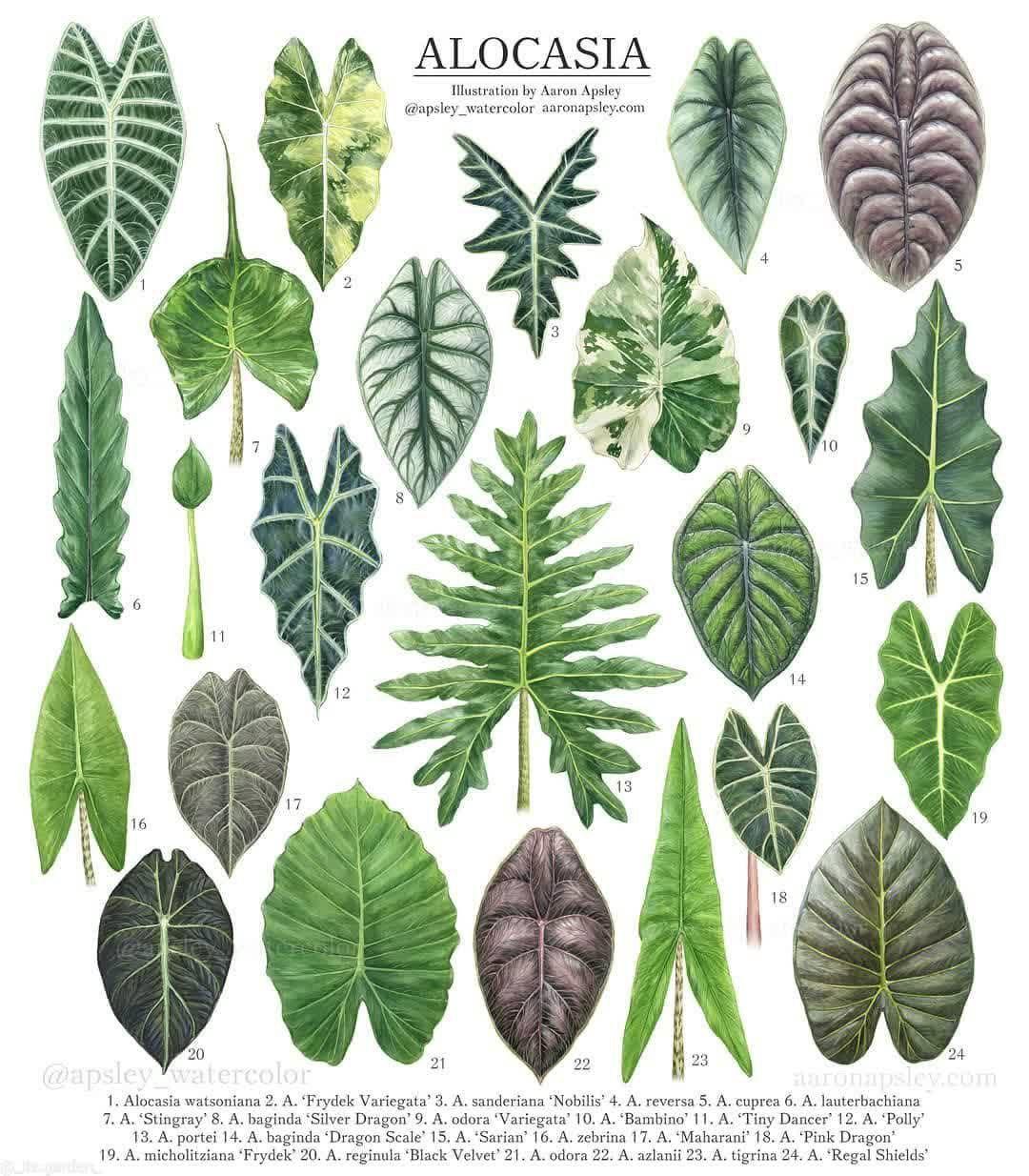🌿 Alocasia

📘 Botanical Background
Previously referred to by various names in early taxonomy (Colocasia, Schizocasia, etc.), Alocasia is a genus of tropical, broad-leaved plants known for their architectural foliage and underground rhizomes or tubers. There are over 100 recognized species, primarily found in humid, forested environments.
🌏 Natural Range![]()
![]()
Native Regions:

Source: https://www.aroidpedia.com/alocasiasrsltid=AfmBOooc5T57DSko9gcojywYBSszJ6P48okAejpiqmJVkwm1FjMKmsf8
Southeast Asia, the Malay Archipelago, Northern Australia, and the Pacific Islands.
Countries Found:
India, Sri Lanka, Thailand, Vietnam, China (including Taiwan), Indonesia, Malaysia, Papua New Guinea, the Philippines, Solomon Islands, and northern parts of Australia.
🌱 Environment
Climate Profile:
Prefers warm, rainy environments—ideally 70–95°F (21–35°C) with high humidity and consistent rainfall (over 2,000 mm annually). Some species tolerate cooler, high-altitude forests due to constant moisture.
Preferred Terrain:
-
Shady forest floors
-
Moist, leaf-litter-rich soil
🔬 Plant Structure & Function
Foliage Forms:
Large, shield-like leaves often arrow- or spear-shaped, with striking veins and textures. The leaf structure aids in light capture under dense canopies.

Source: https://www.exoticrainforest.com/Alocasia%20zebrina%20pc.html
Growth Habit:
Most grow from rhizomes or tubers, producing a crown of leaves. Some develop tall stalks; others stay compact and ground-hugging. Alocasia will readily produce corms which can be divided to create more plants.
Flowering Style:
Alocasia blooms consist of a spadix (a rod-like structure) surrounded by a hooded spathe. Some emit strong scents—sweet or funky—to attract pollinators. A few species can even generate heat to help spread their aroma.
🔁 How Alocasia Spreads
Natural Reproduction:
-
Offsets ("Pups"): Side shoots from the main plant
-
Corms: Underground storage units that sprout new growth
-
Division: Large plants can be split at the rhizome
-
Seeds: Rare in cultivation but possible through pollination

SOURCE: https://www.reddit.com/r/alocasia/comments/17ntu3y/alocasia_frydek_variegata_corm/#lightbox
Breeding & Hybridization:
Selective crossing has produced many ornamental hybrids since the 1800s. This is how we get dramatic cultivars like Alocasia ‘Polly’ or Alocasia ‘Dragon Scale’.
🌿 Home Cultivation Guide

🪴 Potting Media
Try LECA and PON in Semi-Hydro setups.
For soil cultivation, use a well Draining Aroid Mix:
-
Coco coir or peat moss
-
Orchid bark or pine fines
-
Perlite or pumice
-
Optional: worm castings, charcoal, or rice hulls
Avoid: Heavy, waterlogged soils—Alocasia roots are prone to rot if not well-aerated.
💧 Watering & Humidity
-
Keep soil consistently moist but not soggy
-
Best RH: 60–80% (will tolerate lower with slower growth)
☀️ Light Preferences
-
Bright, filtered light (indoors: 400–600 µmol/m²/s)
-
Outdoors: dappled sun or 70–80% shade cloth
-
Avoid direct sun
🌡 Temperature Guidelines
-
70–86°F (21–30°C)
-
Avoid temperatures below 50°F (10°C)
🧪 Feeding Routine
-
Liquid Feed: Dilute fertilizer with every watering ("weakly, weekly")
-
Granular Feed: Use slow-release options in the soil (e.g. Nutricote)
-
Can benefit from additives like calcium (dolomitic lime) and humic acid
🪴 Choosing the Right Pot
-
Go small: Alocasia prefer snug containers
-
Narrow and deep pots are ideal to match root architecture
- Self-watering setups with cache pots make care easy!
🐛 Pest Watch
Common culprits:
-
Spider mites (especially in dry air)
-
Thrips
-
Mealybugs
-
Fungus gnats (overwatering issue)
Prevention Tips:
-
Boost airflow and humidity
-
Use neem oil or insecticidal soap
-
Treat substrate with beneficial microbes or systemic granules if needed
0 comments